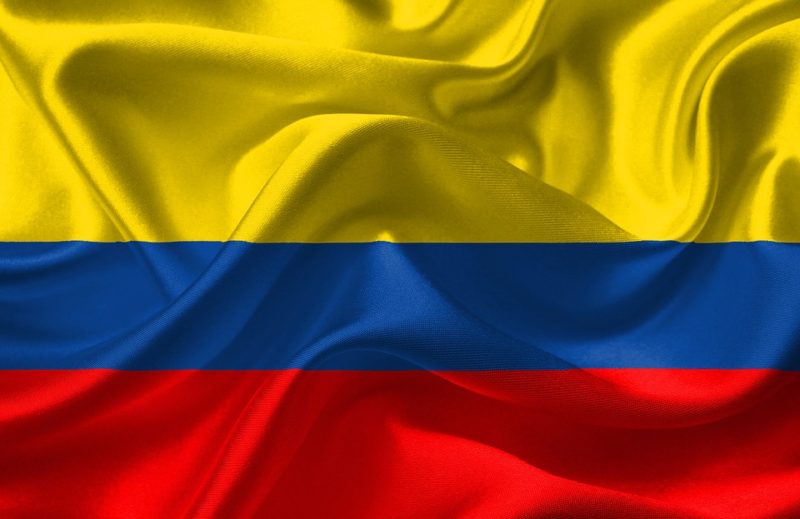Two months before his pastoral journey to Colombia, from September 6-11, 2017, Pope Francis authorized the Congregation for the Causes of Saints to recognize the martyrdom of two Colombians: a priest and a Bishop, both of whom lived in the 20th century. He himself will preside over their beatification on September 8, confirmed the Director of the Holy See Press Office, Greg Burke.
On receiving Cardinal Angelo Amato, Prefect of the Dicastery this morning, July 7 at the Vatican, the Pope agreed to the publication of the Decrees concerning a miracle, two martyrdoms and five “heroic virtues.”
The two Colombians are Monsignor Jesus Emilio Jaramillo Monsalve (1916-1989), Bishop of Arauca, killed out of hatred for the faith in the surroundings of Fortul, and the diocesan priest Pedro Maria Ramirez Ramos (1899-1948), killed out of hatred for the faith at Armero.
They will be proclaimed Blessed on the third day of the Pope’s visit to their country. On that day, the Holy Father will celebrate Mass at Villavicencio and then hold a great prayer meeting for National Reconciliation at Las Malocas Park. The Pontiff will also visit the “Cross of Reconciliation” at the Founders’ Park.
Prophet at the Service of Reconciliation
The Vatican agency Fides published a biography of Monsignor Jaramillo Monsalve, born on February 14, 1916 at Santo Domingo. He was ordained priest on September 1,1940 at the Institute of Foreign Missions of Yarumal. He held different posts there: professor, Spiritual Director of the Seminary, Master of Novices, Rector, Superior General and National Delegate for the Apostolate of the Laity.
He was appointed Apostolic Vicar of Arauca on November 11, 1970. On July 19, 1984, Pope John Paul II raised him to the Apostolic Vicariate with the rank of diocese. Monsignor Jesus Emilio Jaramillo Monsalve became its first Bishop. Moreover, it was his work of evangelization and promotion of the local Church, that made possible the development of the extended territory , where contraband and drug trafficking were rampant.
He was taken hostage by armed bandits on October 2, 1989 along with three priests and a seminarian when he was on a pastoral visit to Fortul, a locality 800 kilometers east of Bogota. He was found dead the following day, shot with four bullets to the head.
Fides recalls that the Colombian Episcopal Conference rendered homage to him with these words: “Bishop Jesus Emilio Jaramillo Monsalve consecrated himself in an exemplary manner for 18 years, with the heart of a true missionary . . . and generous solicitude for the Church, particularly of Arauca. By his word on fire with the love of Christ, with the vigor of a prophet, he was always at the service of the Gospel, of peace, of reconciliation, of coexistence and the defense of the sacred rights of the human person.”
He Stayed with the Faithful Despite the Danger
Pedro Maria Ramirez Ramos was born on October 23, 1899 at La Plata. According to Daniel Restrepo, one of his biographers, he entered the Mary Immaculate Seminary as a boy in 1915, but left in 1920, prey of doubts about his vocation. Eight years later, he entered the Seminary again at Ibague and was ordained priest in 1931.
He was then appointed parish priest of several parishes, and finally that of Armero. On April 9, 1948, while visiting a patient in hospital, revolts broke out, triggered by the assassination of Jorge Eliecer Gaitan, candidate to the Presidency of the Republic. The violence spread to Armero and factions set upon the parish priest, who sought refuge in the church. He refused to flee abandoning the people.
The insurgents destroyed the door of the building, seized Father Pedro, accusing him of hiding weapons in the adjacent convent. They killed him on April 10 and impeded the faithful from giving a Christian burial to his mortal remains for some ten days.
Father Pedro Maria Ramirez Ramos is known in Colombia as “the martyr of Armero.”

Columbia, Flag / Pixabay - CC0 - DavidRockDesign, Public Domain
Colombia: The Pope Will Beatify Two Martyrs, a Bishop and a Priest
The Ceremony Will Be Held at Villavicencio on September 8


